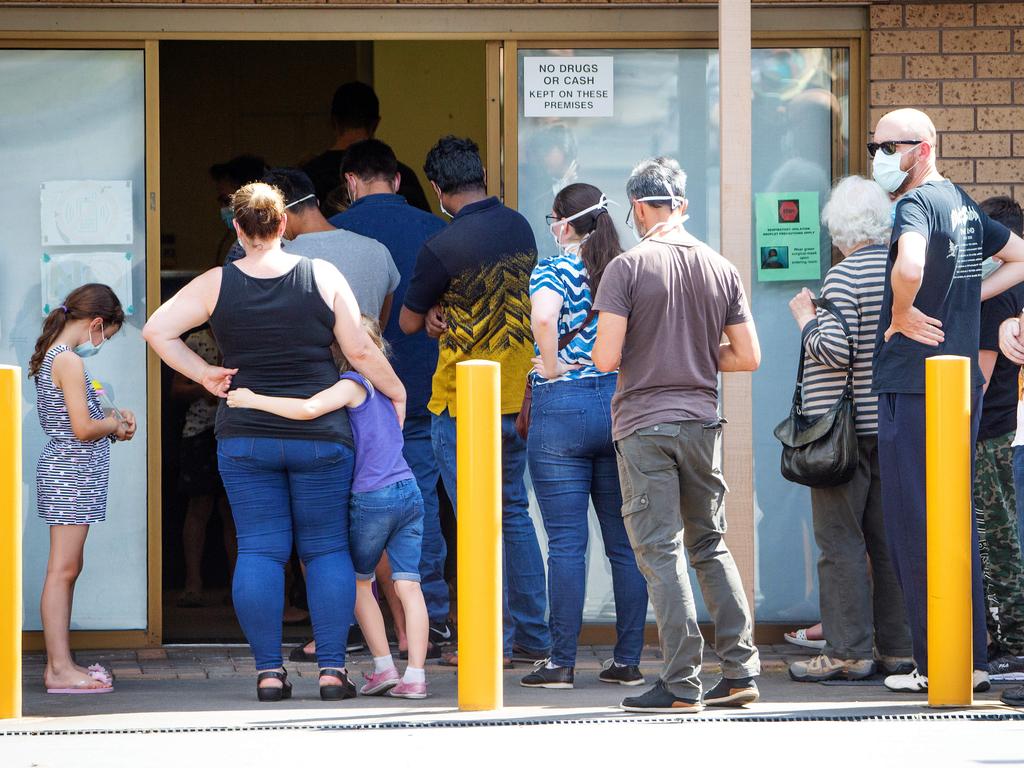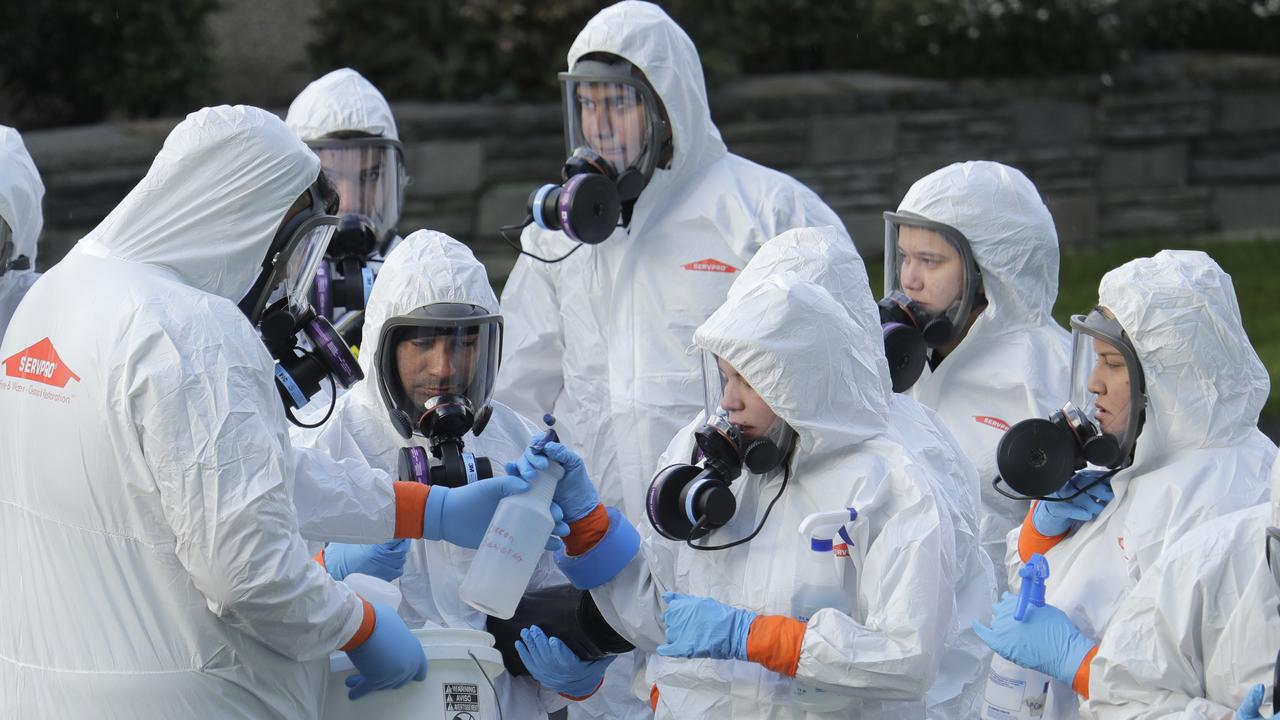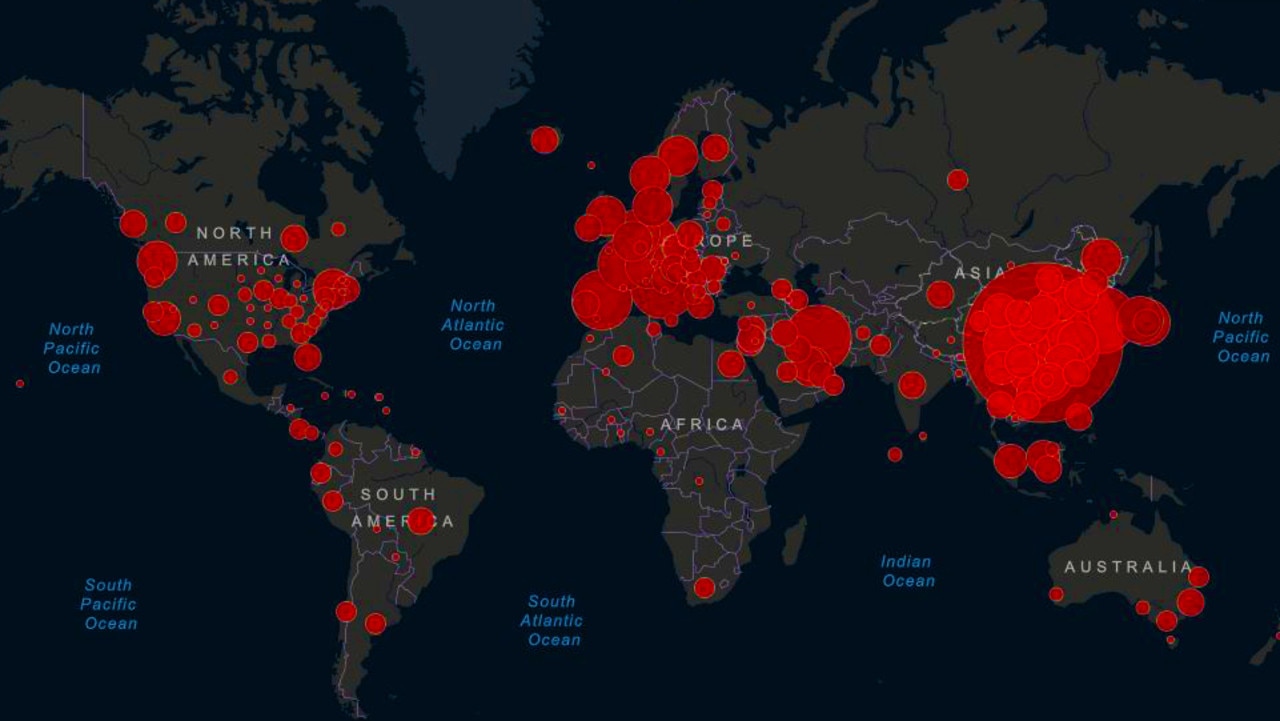Doctors flooded by Australians confusing flu symptoms for coronavirus
The coronavirus pandemic is causing chaos for Australian doctors who are being bombarded by patients mistaking a common bug for the virus.
With The World Health Organisation declaring the coronavirus a pandemic, doctors are urging Australians not to panic and flood medical centres with unnecessary testing.
As Australia moves from summer into autumn, people are confusing the common cold and flu for COVID-19 and flooding medical centres when they shouldn’t be.
“Australians are confusing the two, because the symptoms of common cold/flu are identical to those caused by the coronavirus,” Melbourne GP Dr Vyom Sharma told news.com.au.
“The only way to distinguish them is through testing. At the moment, we can only test those with symptoms who are in a high risk category.
“For now, everyone else has a really tiny chance of having coronavirus compared to the cold/flu.”
Dr Sharma advises those who fall into the high risk category – a recently returned traveller of 14 days or someone who has been in contact with a person known to have COVID-19 – should call the dedicated hotline if they are experiencing any of: fever, cough, shortness of breath, runny nose and sore throat.
“Do not physically attend a doctor until you have called ahead first,” he said.
“Everyone else is low risk and should be handled like a normal visit to a GP, but you must call ahead of time, do not attend unannounced.”
RELATED: Follow the latest coronavirus updates

Dr Sharma went on to explain the unnecessary testing is “taking up valuable time and resources for both patients and hospitals” a message echoed by the country’s chief medical officer Brendan Murphy yesterday who said a number of people were seeking testing who didn’t need it.
“It’s clear that there is some anxiety in the community with over 100 cases,” he said.
“Most of these cases are related to imports from overseas. There is only one element of significant community transmission and that’s small and controlled in Sydney.
“There is no point being tested at the moment if you have not travelled or if you’ve not been in contact – even if you have flu-like illnesses.
“We are not saying to people who get acute respiratory symptoms, a cold or a flu, to go and get tested for COVID-19. We are saying that if you’re a returned traveller or you’ve been in contact with someone who has been a confirmed case, then you should be tested.”
Professor Murphy said all other people were doing was putting an unnecessary burden on the testing.
“I’m just trying to tell people to stay reasonably calm about this,” he said.
“We’ve got small numbers of cases at the moment. We do expect more and I’ve also said on many occasions, for most people who get this virus, it is a very mild illness.”
WHEN SHOULD YOU GO TO THE DOCTOR?
Federal Health Minister Greg Hunt has also made it clear when Australians should go to the doctor if they think they have coronavirus.
His comments came after the government was accused of mixed advice on what people should do if they have symptoms of the virus.
“If you’ve been in contact with somebody who has been diagnosed, if you have been in a
high risk area, and you show symptoms, then that is when you should be seeking testing,” Mr Hunt told Today.
“We are building up so we have got this additional capacity. It will be in many ways a challenging time but we have just been through the bushfires.
“We saw the incredible Australian spirit and support for each other. Now is the time for that set of our best selves.
“Our support, the work of the states and doctors but at the same time supporting each other and backing each other. We are providing the environment where the health will be taken care of, but only the community can work together to provide that support and we all have a role.”

WHAT ARE THE SYMPTOMS OF CORONAVIRUS?
There is still confusion over the symptoms of the coronavirus which range from a mild cough to pneumonia.
Australia’s Department of Health says symptoms include fever, flu-like symptoms such as coughing, sore throat, fatigue and shortness of breath.
In extreme cases the virus can cause organ failure. However, about 80 per cent of patients only get a mild to moderate form of the disease.
Those with higher risk of severe sickness are people aged over 60 and those with underlying conditions such as hypertension, diabetes, cardiovascular disease, chronic respiratory disease and cancer.
Strangely, the virus doesn’t seem to be affecting children much, and health experts are still unsure why.
The mortality rate for the new coronavirus is about 3.4 per cent worldwide, according to the World Health Organisation. That is a preliminary figure as the organisation doesn’t know how many milder cases are going undetected.
It also varies from place to place depending on the strength of the local health care systems where outbreaks occur.
By comparison, the SARS outbreak had a death rate of around 10 per cent. The seasonal flu, on the other hand, has a death rate of about 0.1 per cent and claims up to 650,000 deaths globally each year.

WHAT IF YOU HAVE THE VIRUS?
Even if you do contract the virus, Professor Brendan Murphy, Australia’s Chief Medical Officer, has estimated that 80 per cent of people who contract coronavirus will experience only mild symptoms.
A Brisbane woman infected with the virus after travelling through Singapore to return home from the UK recently described her symptoms as no worse than a “sore throat and a headache”.
“The message I’d like to put out to the world is that maybe someone has it already, and it’s very common symptoms, like a headache, or a sore throat or just being tired,” Bridget Wilkins told 7 News.
“(I thought) I had those symptoms because I’d just travelled 30-plus hours. I’ve still got those symptoms, but nothing more than that.”
A study from Germany looking into the rapid way the coronavirus had spread around the world investigated the cases of nine people infected with the virus and found those who were mildly sick were likely to not still be infectious 10 days after first experiencing symptoms.
Continue the conversation @RebekahScanlan | rebekah.scanlan@news.com.au




